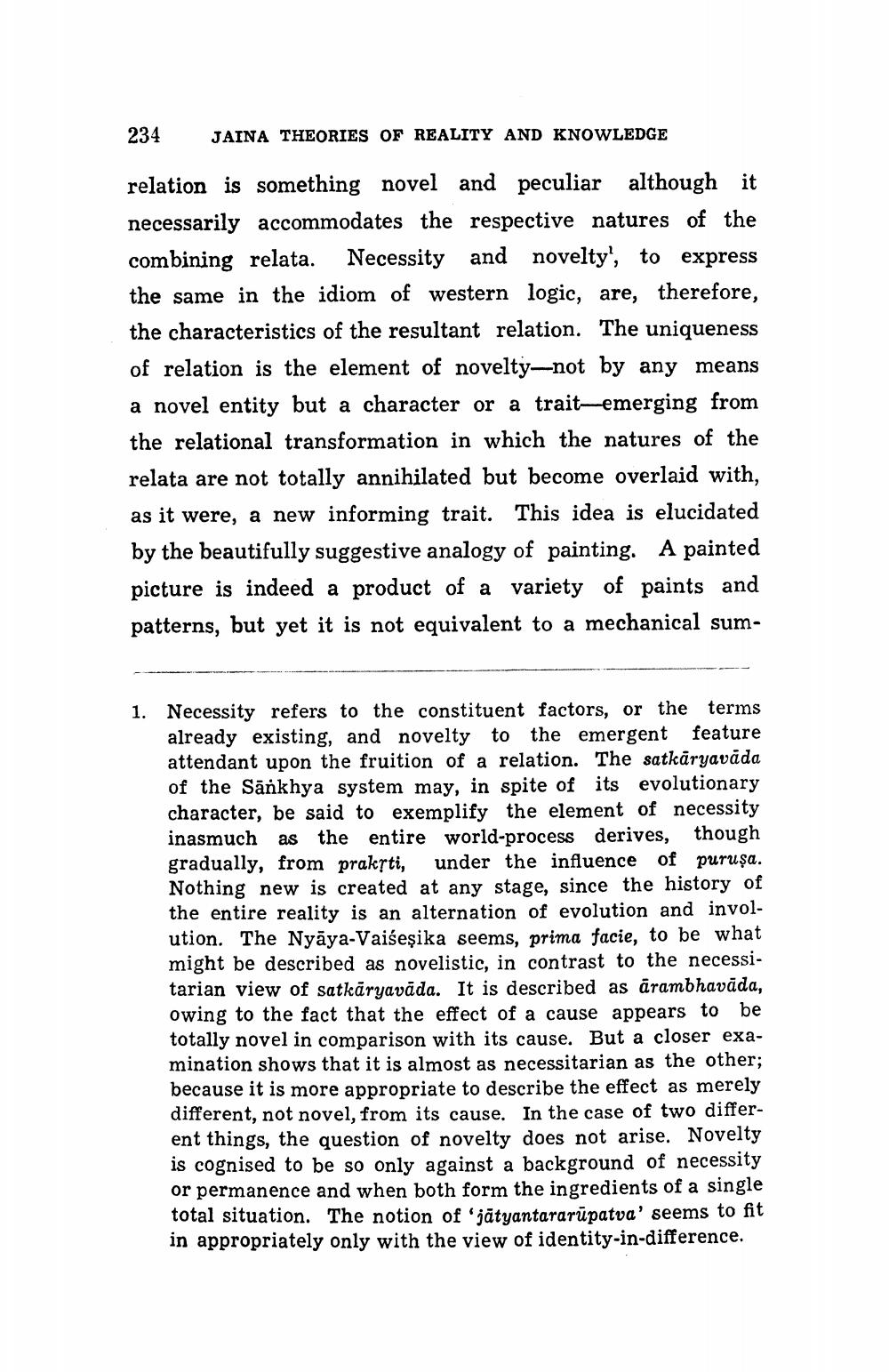________________
234
JAINA THEORIES OF REALITY AND KNOWLEDGE
relation is something novel and peculiar although it necessarily accommodates the respective natures of the combining relata. Necessity and novelty', to express the same in the idiom of western logic, are, therefore, the characteristics of the resultant relation. The uniqueness of relation is the element of novelty-not by any means a novel entity but a character or a trait-emerging from the relational transformation in which the natures of the relata are not totally annihilated but become overlaid with, as it were, a new informing trait. This idea is elucidated by the beautifully suggestive analogy of painting. A painted picture is indeed a product of a variety of paints and patterns, but yet it is not equivalent to a mechanical sum
Necessity refers to the constituent factors, or the terms already existing, and novelty to the emergent feature attendant upon the fruition of a relation. The satkāryavāda of the Sankhya system may, in spite of its evolutionary character, be said to exemplify the element of necessity inasmuch as the entire world-process derives, though gradually, from praksti, under the influence of puruşa. Nothing new is created at any stage, since the history of the entire reality is an alternation of evolution and involution. The Nyāya-Vaiseșika seems, prima facie, to be what might be described as novelistic, in contrast to the necessitarian view of satkāryavāda. It is described as ārambhavāda, owing to the fact that the effect of a cause appears to be totally novel in comparison with its cause. But a closer examination shows that it is almost as necessitarian as the other; because it is more appropriate to describe the effect as merely different, not novel, from its cause. In the case of two different things, the question of novelty does not arise. Novelty is cognised to be so only against a background of necessity or permanence and when both form the ingredients of a single total situation. The notion of 'jätyantararūpatva' seems to fit in appropriately only with the view of identity-in-difference.




